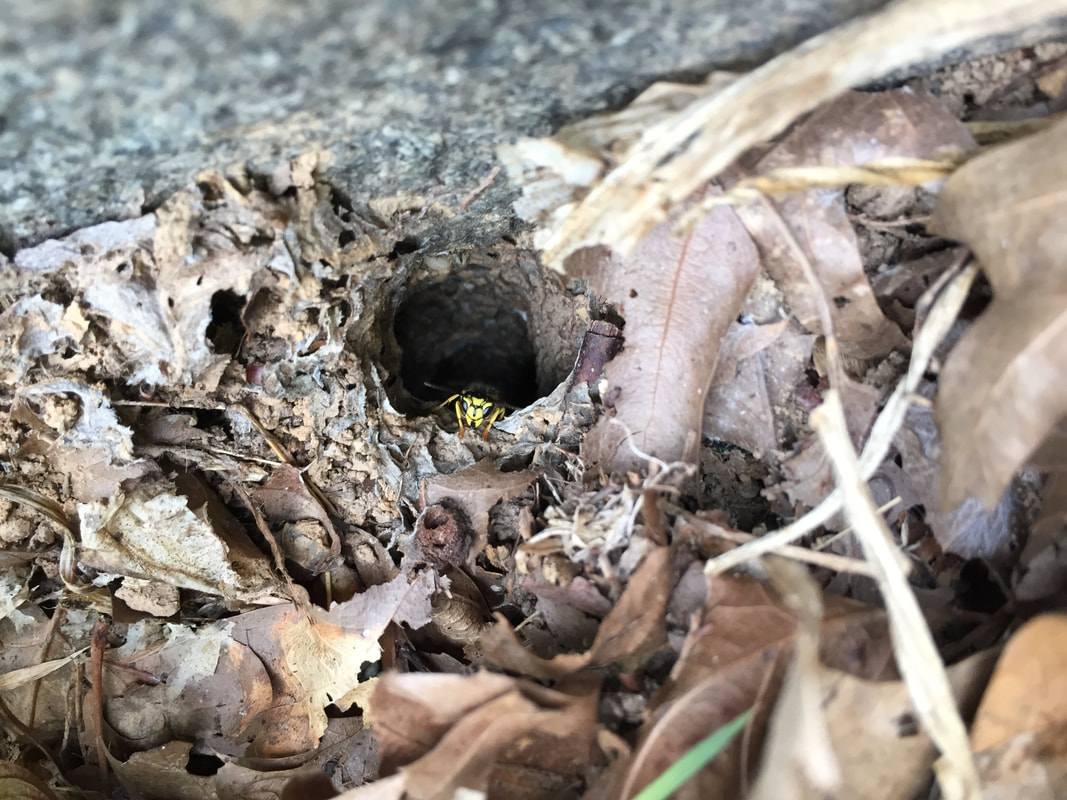|
Last week, we talked about the dangers that fleas and ticks pose to our family pets. Fleas and ticks live on our pets for at least some of their life cycle, which in some ways makes them easy to spot and control. But what happens when we send our pets outside and they are attacked by insects that we can’t necessarily see or prevent? This week, we’ll talk about how to reduce interactions between your pet and bothersome lawn and landscape pests. INTRODUCTIONIn our previous blog, we discussed the problems that parasitic pests cause for animals. Specifically, how fleas and ticks can threaten a pet’s comfort, health, and (in extreme cases) life. However, we’ve all seen the “cute” photos of dogs that sniffed a bee a bit too close—resulting in a puffy snout and embarrassed pup. So, in this blog, we’re going to discuss the pests that live around your home (but not necessarily on your pet) that you may want to keep your pet away from, and how you can reduce their presence. Specifically, we will focus on mosquitoes, stinging wasps, and stinging ants. PESTS THAT AFFECT PETS1. MOSQUITOES Pets are not immune to mosquito bites. In fact, while many mosquitoes prefer mammals, there are definitely species that will attack birds, reptiles, and amphibians. In addition to itching and discomfort, mosquito bites can transmit some not-so-nice parasites and pathogens to pets, too. One of the most devastating is the transmission of heartworms from mosquitoes to pets, mainly dogs. These parasites block the flow of blood to major organs and are typically not detected until the disease is very progressed. At this stage, treatment is difficult and the animal can die. For cats that are infected, lung failure can occur due to inflammation triggered by the presence of heartworm larvae. In addition to heartworm disease, mosquitoes may transmit eastern equine encephalitis (EEE) and West Nile virus (WNV) to pets, but infection rarely causes symptoms or problems for small animals like cats and dogs (unlike horses). With the range of disease-transmitting mosquitoes increasing and the risk of novel pathogens emerging, pet owners should prioritize protecting pets from current and future mosquito-transmitted diseases. Luckily, there are a number of solutions to do just that! Because heartworm disease is a major threat from mosquitoes, veterinarians recommend that animals take heartworm preventatives year-round. These products work by killing heartworm larvae as they enter the animal’s bloodstream. In addition, there are other oral and topical medications for fleas and ticks that are also labeled against mosquitoes. These products may repel mosquitoes before they are able to bite. Never use a mosquito repellent that is labeled for humans on a pet. These products may cause unexpected side effects. In addition to topical and oral medications, there are steps you can take to prevent mosquitoes from breeding and simply existing around your home, which would of course prevent pet contact with these critters.
3. FIRE ANTS Veterinarians treat small animals and pets more often for fire ant stings than any other animal. Fire ants will often sting the hairless areas of an animal, such as the eyes, ears, belly, and muzzle—all of which are very sensitive areas. Fire ant stings are painful, can become infected, and some pets may have serious allergic reactions to their stings. Because mounds can house thousands of fast-moving, aggressive stinging ants, the animal may suffer thousands of injuries before a human can intervene. Like wasps and hornets, protecting your pets from fire ant stings begins with protecting your lawn from fire ants. If your pet is being actively stung by fire ants, brush them off as quickly as possible while avoiding getting any ants on yourself. Do not use water—it does not phase them, and ants can simply hang out and continue stinging. When you are applying pesticides for fire ant management, you must keep pets away from the area for the length of time specified on the product label. Be especially sure to keep pets away from ant baits, which our furry friends will readily consume. CONCLUSIONS.Biting and stinging pests can cause pain and discomfort for pets. In addition, bites and stings from insects like mosquitoes, wasps, and ants pose significant risks to animal health. Remember to talk to a veterinarian for the best options to protect your pet from mosquito bites. Landscapers and pest management professionals can help you create a pest-free yard. Finally, entomologists are a great resource for pest management in the environment too! Like many pests, bites and stings are an issue best solved with an ounce of prevention rather than a pound of cure.
0 Comments
Your comment will be posted after it is approved.
Leave a Reply. |
Bug Lessons BlogWelcome science communicators and bug nerds!
Interested in being a guest blogger?
Archives
November 2023
Categories
All
|

